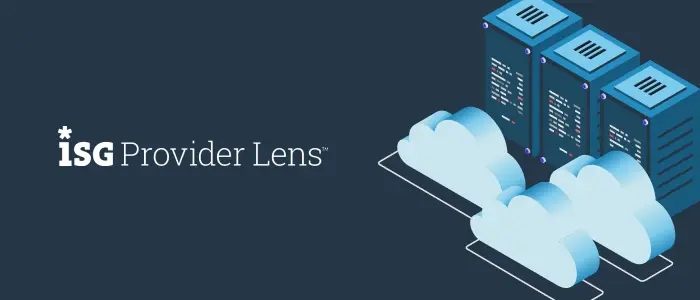
Cloud strategy starting points: Cloud computing defined
By now, cloud computing has some history to it. In fact, the term ‘cloud’ was first used to refer to platforms for distributed computing as early as 1993. That’s when Apple spin-off General Magic and AT&T used it in describing their paired Telescript and PersonaLink technologies, saying that ‘instead of just having a device to program, we now have the entire cloud out there, where a single program can go and travel to many different sources of information and create a sort of a virtual service?’[1]
That’s still the concept of cloud in a nutshell. And today, cloud computing is used ubiquitously across organizations big and small. What’s changing is how cloud is deployed ‘ with the distinctions between public and private cloud evolving to hybrid cloud and multi-cloud solutions. This rapidly changing landscape requires you investing more time and energy in developing your overall cloud strategy.
Cloud strategy basics set the foundation for today’s hybrid cloud world
Gartner defines cloud strategy as a concise point of view on the role of cloud within the organization. It is a living document, designed to bridge between a high-level corporate strategy and a cloud implementation/adoption/migration plan. A cloud strategy is different from a cloud adoption or migration plan.[2]
Gartner goes on to outline the baseline elements of any cloud strategy to include a cloud computing baseline, business baseline, services strategy, financial considerations, principles, inventory information, security, supporting elements, and an exit strategy.[3]
With this kind of clear, complete cloud strategy in place, you can better understand and leverage the pros and cons of your approach ‘ and better build on that strategy as you bridge to hybrid cloud.
Every cloud strategy is a hybrid cloud strategy
Today, hybrid cloud represents a significant portion of organizations’ overall cloud strategy. Early research across a variety of IT industry surveys indicated that 62% of enterprises now use a hybrid IT environment with integrated on-premises systems and off-premises cloud/hosted resources.[4] That percentage of hybrid cloud uses has surely continued to climb, making it fair to conclude that every cloud strategy is a hybrid cloud strategy.
Of course, the hybrid cloud experience is different for every company, depending on their industry and business structure. There’s no right or wrong approach, as most organizations seek to balance workloads between traditional on-premises data centers, along with public cloud and private cloud combining into varying hybrid and multi-cloud cloud scenarios. Cost, speed, and security are all factored in to meet unique needs.
The next challenge: Managing your hybrid cloud
As more enterprises embrace hybrid cloud, it’s become essential for cloud management platforms to extend their capabilities to support them. But that’s not been without challenges.
Here’s the thing: There are no industry standards for hybrid multi-cloud architecture or management. Workload placement across multiple distributed execution venues is highly subjective to each enterprise. It depends on a range of factors, including the value and risk tied to workloads, lifecycle stages, usage patterns, application behavior characteristics, data criticality, data sovereignty, the price performance, and risk characteristics of various execution venues.[5]
In the meantime, application enterprises get ahead by moving fast, grabbling with complex hybrid and multi-cloud solutions slows things down. IT is left bogged down by legacy tools and processes and isn’t able to move as fast as public clouds. In the meantime, DevOps and other teams often bypass IT to get things done, driving up costs and risks along the way. In many cases, creating private clouds and trying to manage to manage on-prem infrastructure as code has been a nightmare. The shift from virtual machines to containers and cloud-native scenarios only compounds the challenges.
This in turn is driving the need for a more uniform framework to provision, manage, and deploy disparate and distributed IT infrastructure and resources in a hybrid cloud world.
Why your hybrid cloud strategy needs a next-generation management platform
The ideal hybrid cloud management platform would provide you with everything you need to manage, govern, automate, and optimize hybrid cloud. And that’s exactly what Morpheus can do for you.
With the Morpheus cloud management platform, you can quickly enable hybrid cloud and control public cloud access so your teams can provision on demand. Because it’s persona based, developers, IT, security, and finance teams all get what they need ‘ while spending less time worrying about infrastructure and more time modernizing applications. Morpheus also gives you the freedom to mix and match on-prem and public cloud technologies, and it offers nearly 100 integrations and an extensible framework that lets you quickly automate existing tools.
Self-servicing provisioning is an essential feature of the Morpheus platform is self-service provisioning, It gives you the ability to provision any service into any cloud ‘ from single OS to complex multi-tier applications with clustered layouts and cloud-native platform as a service (PaaS) services.
Be ready for what comes next
Going forward, enterprise IT organizations need better ways to cope with the complexity of
orchestration, administration, and integration needed across hybrid clouds. That includes a means
to structure, automate, and govern on-demand IT services intelligently. To see how the Morpheus cloud management platform helps you meet those goals, request a demo today.
[1] Wikipedia; Cloud computing; https://en.wikipedia.org/wiki/Cloud_computing
[2] Gartner; Information Technology Glossary; https://www.gartner.com/en/information-technology/glossary/cloud-strategy
[3] Gartner; Cloud Strategy Cookbook; April 2021; https://www.gartner.com/smarterwithgartner/the-cloud-strategy-cookbook
[4] 451 Research; Hybrid Cloud Management & Integration Essential Technologies for On-Demand IT; 2019
[5] 451 Research; Hybrid Cloud Management & Integration Essential Technologies for On-Demand IT; 2019